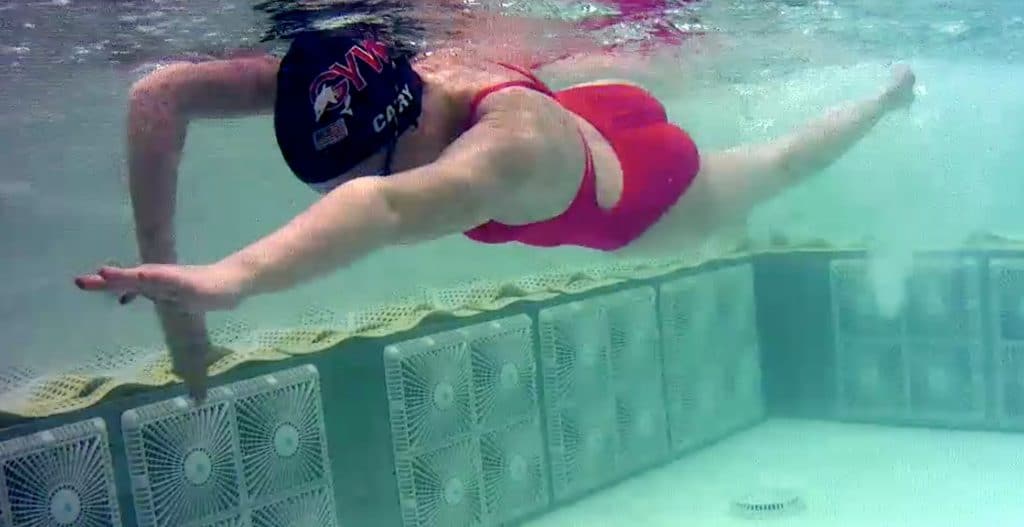All, welcome back to our new series on Sculling in Swimming! As I’m sure most of you have heard of the term: Sculling, our goal within this next series is to discuss What Sculling is, Why it is Important, and our Top 5 Favorite Sculling Drills!
Let’s Get Started!
Sculling in Swimming can be best defined as types of arm drills used by competitive swimmers to help build strength and technique. Sculling gets its’ name the sport of rowing, where the rowers use an Oar to generate propulsion. The Oar determines the direction and how fast you travel – similar to the forearm, wrist, and palms for swimming. By mimicking an Oar in the water, you can use different Sculling Drills to help Swimmers learn where and in what direction to move water – to maximize their propulsion generated, while keeping a good body line.
You can read a lot online about Sculling helping a swimmer feel pressure AGAINST their forearms, which is true. But the reality is, you want a swimmer to feel water being moved from everywhere below their elbow and down to their longest finger – the longest lever arm possible or maximum amount of surface area. There’s so much talk about a High Elbow Catch in Freestyle, that most coaches often forget to initiate this catch – the same pressure seen in Sculling MUST BE on a swimmer’s lower arm, forearm, palm, and wrist.
Most younger swimmers who you introduce Sculling to will not feel pressure against their lower arms well in the water. The key here is to get them into a High Elbow Catch Position, so the forearm is actually PERPENDICULAR to the water and pressure can be created. See image below:

Sculling and Age-Group Swimmers:
I’ve noticed from coaching age-group swimmers (ages 9-13), that when you first introduce Sculling to them – it’s a bit of a hot mess. They are so used to doing movements in the pool that directly create an movement forward, that they feel like they are collectively going “no where” while Sculling. You’ll see swimmers start to kick A TON while Sculling, just to create some forward momentum in the pool. Lots of times these are more kick-driven Freestylers and/or Swimmers who naturally don’t have a great High Elbow Catch! While I’m not against a light kick on the back end (see video below), I don’t want my swimmers to be focusing on the kick while Sculling – you need intentional focus on the arms and generating that pressure against them.
Also, you’ll see younger swimmers (9-11 years old) and depending on size – struggle in general to use their pull buoy. Their pull buoy may fall out or manipulate their body position so intensely (especially if they don’t weigh much), that they cannot get their arms into a position to feel pressure, because they are too buoyant. With these swimmers, I recommend waiting until they feel more comfortable with a buoy and then, reintroduce Sculling to them.
Training Plans
Looking for more help? Don’t worry – In January of 2022, we launched our new Stroke Specific Training Plans for swimmers! Each plan is 90-days long and helps a swimmer rebuild their strokes from the ground up. Every day for 90-days, you’ll add an additional 10-minute set to your current workout – focusing on a specific aspect of that stroke’s technique. If you liked this video above and want more Sculling Drills, check out our new Training Plans HERE.
Next week, we will dive deeper into the benefits of Sculling for Swimmers for Part II of our series. Be sure to stay tuned.
Until Next Time,
Abbie Fish

One Response
Excellent 🌹🌹🌹